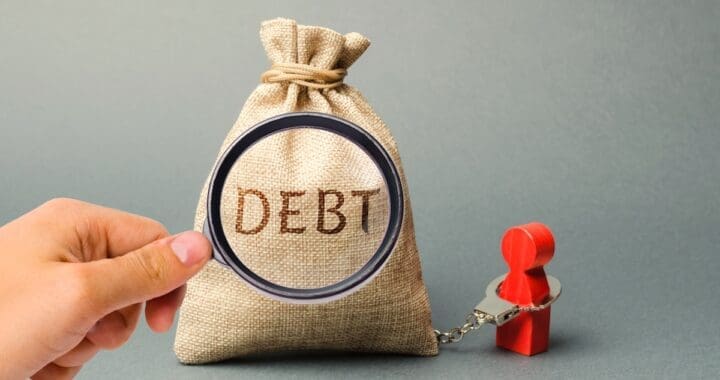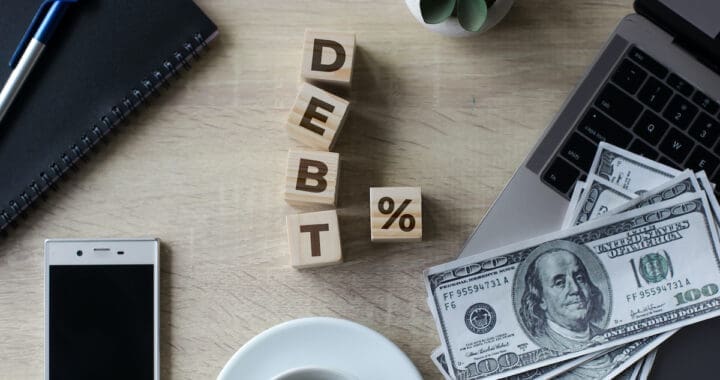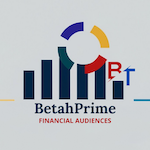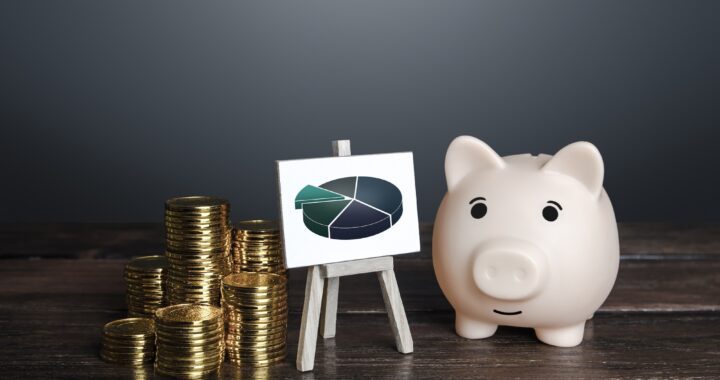Introduction:
In today’s fast-paced and consumer-driven society, it’s easy to find ourselves trapped in the grip of high-interest debt. The burden of excessive interest rates can quickly become a ball and chain, holding us back from achieving true financial freedom. However, with a strategic debt management plan, it is possible to break free from this cycle and pave the way towards a more prosperous future. In this article, we will examine the impact of high-interest debt on our financial well-being and discuss practical strategies to regain control of our finances.
Key Takeaways:
1. High-interest debt can be a ball and chain, hindering progress towards financial freedom.
2. The compounding nature of high interest rates can quickly escalate the debt burden.
3. Effective debt management strategies are essential for breaking free from the cycle of high-interest debt.
4. Evaluating your financial situation, budgeting, and prioritizing debts are crucial steps in debt management.
5. Negotiating with creditors, consolidating or refinancing debt, and seeking professional guidance can provide additional support.
6. Cultivating long-term financial wellness involves building an emergency fund, developing a savings plan, and continuously educating oneself.

1. Understanding the Weight of High-Interest Debt:
The Debt Monster
Imagine high-interest debt as the proverbial wolf in sheep’s clothing, alluring you with the promise of quick cash and financial flexibility. It often starts innocently enough, with a simple credit card swipe or a seemingly straightforward personal loan. However, beneath the surface, it conceals a financial monster that thrives on your hard-earned money.
High-interest debt may appear as a convenient financial tool, offering quick access to funds when you need them the most. But the true nature of this beast lies in the insidious compounding interest rates, lurking like hidden traps in the dense forest of your financial landscape. These rates may seem harmless when making that initial transaction, but as time progresses, their impact snowballs into an ever-growing burden, akin to an avalanche slowly but relentlessly engulfing your financial well-being.
As the interest compounds, it can feel like a growing weight on your shoulders, gradually eroding your ability to make significant progress toward your financial goals. The beast of high-interest debt transforms your financial life into a relentless struggle to keep up with interest payments, making it increasingly difficult to free yourself from its grip.
Recognising the Debt
To better understand this beast, you must appreciate its multifaceted nature. Credit card debt can be particularly deceptive with its revolving balances and often double-digit interest rates. It allows you to make minimum payments that barely scratch the surface of your principal balance, leaving you trapped in a seemingly endless cycle of debt.
While providing quick cash for various purposes, personal loans also come with their own set of interest charges that can quickly add up. It’s like a friendly serpent that slowly constricts your financial flexibility.
The key to defeating this financial adversary lies in recognizing it for what it is—an impediment to your path to financial independence and early retirement (FIRE). Understanding the compounding effects of high interest is the first step in unmasking this critter. Only when you grasp the true nature of this financial challenge can you begin to develop strategies to tame it, break free from its clutches, and forge a path toward a brighter financial future.
So, let’s explore the strategies to conquer this monster and attain the coveted FIRE status.
2. The Shackles of Financial Freedom:
Unmanaged high-interest debt significantly hampers our ability to achieve financial freedom. It drains our resources, limiting our capacity to save, invest, or pursue our dreams. It transforms every aspect of our financial life into a never-ending struggle to keep up with interest payments, inhibiting our progress and magnifying stress.
Financial freedom isn’t just a far-off dream; it’s a real possibility within your grasp. It’s the ability to live life on your terms, to spend your time pursuing passions, and to have peace of mind, knowing that you’re in control of your financial destiny. But, and it’s a big ‘but,’ unmanaged high-interest debt can quickly turn this dream into a mirage on a distant horizon.
Every dollar spent on interest debt payments is a dollar that could be fueling your financial journey. The wind in your sails, the compass pointing you towards your dreams. Yet, high-interest debt diverts these resources to merely keeping you afloat.
Don’t let the siren song of high-interest debt lure you onto the rocks of financial instability. It’s time to unfurl your economic sails, chart a course toward more innovative money management, and steer clear of the treacherous waters of unnecessary interest payments. Financial freedom is your destination, and the path is straightforward once you break free from high-interest debt. The journey may be challenging, but the rewards are boundless. Are you ready to heed the call of financial freedom?

3. Breaking Free: A Debt Management Roadmap:
a. Evaluate the Situation: The first step towards overcoming high-interest debt is comprehensively understanding your financial situation. Take stock of all your debts, interest rates, and payment schedules. Identify areas where you can cut back on expenses and commit to reducing unnecessary spending.
b. Budgeting and Prioritizing: Create a realistic budget that ensures you have enough to cover your essential needs while also allocating a portion towards debt repayment. Prioritize your debts based on interest rates and consider employing strategies such as the debt avalanche or snowball method to pay them off systematically. Here is an exciting Book to read.
c. Negotiating with Creditors: Reach out to your creditors to explore opportunities for negotiating better terms, such as lower interest rates or extended payment plans. Some creditors may be willing to work with you to find mutually beneficial solutions. Remember, it never hurts to ask!
d. Consolidation and Refinancing: Consider consolidating your high-interest debts into a lower-interest loan or transferring balances to a credit card with a promotional 0% interest rate. This can help reduce your overall interest burden and make repayment more manageable.
e. Seek Professional Guidance: If your debt situation feels overwhelming or you need help proceeding, feel free to consult a financial advisor or credit counseling agency. They can provide expert insights and help you craft a tailored debt management plan.
4. Cultivating Long-Term Financial Wellness:
Breaking free from high-interest debt is just one step towards financial freedom. It’s essential to establish new financial habits and practices to ensure sustainable progress:
a. Build an emergency fund: Set aside a portion of your revenue towards an emergency fund to cover unexpected expenses. This will help you avoid falling into high-interest debt in the future.
To start creating your emergency fund, you need to determine how much you need to save. A general rule of thumb is to save at least three to six months’ worth of living expenses. However, the actual amount you need may vary depending on your circumstances, such as job security, family size, and health status.
Keeping your emergency fund in a distinct account from your regular checking or savings account is also essential. This separation will help you track your progress toward your savings goal and avoid dipping into your emergency fund for non-emergency expenses.

b. Develop a savings plan: Commit to saving regularly, even if it’s a small amount initially. Over time, compound interest will work in your favor and contribute to your overall financial stability. By setting aside a fragment of your income each month, you can construct an emergency fund to cover unexpected expenses, pay off debts, and invest in your future.
To start, you need to determine your savings goals and create a budget allowing you to allocate a fixed amount towards monthly savings. Setting aside at least 20 – 25% of your income for savings is advisable. However, if that seems too high, you can start with a smaller value and gradually increase it over time.
Another effective savings strategy is to automate your savings. Set up automatic monthly cash transfers from your checking account to your savings account. This way, you can make the transfer directly and will be less likely to spend the money committed for savings.
c. Educate yourself: Stay informed about personal finance and investment strategies. Continuously expand your knowledge to make well-informed financial decisions and grow your wealth. Moreover, educating yourself is an ongoing process that requires continuous learning and staying up to date with the latest trends and developments.
To start, you can read personal finance books, blogs, and publications to understand personal finance concepts and investment strategies. You can also attend workshops, discussions, and webinars to learn from experts and network with other like-minded individuals.
It’s also important to stay current with financial news and updates. Reading financial news or subscribing to financial newsletters can assist you in staying informed about market trends, economic indicators, and investment opportunities.
Conclusion:
High-interest debt can feel like an impenetrable barrier to financial freedom, but it is not insurmountable. By taking proactive steps to supervise your debts, budget diligently, and prioritize your financial well-being, you can break free from the chains of high-interest debt. Remember, the road to financial freedom requires patience, discipline, and perseverance. Your journey starts now.
FAQs:
1. Is high-interest debt a common problem?
Yes, high-interest debt is a common issue that many individuals face. It can arise from credit card debt, personal loans, or other forms of borrowing with high-interest rates.
2. How does high-interest debt hinder financial freedom?
High-interest debt consumes a significant portion of one’s income in interest payments, leaving limited resources for saving, investing, or pursuing financial goals. It can create a cycle where debt repayment becomes the primary focus, hindering progress towards financial freedom.
3. What is the best way to prioritize debt repayment?
One effective method is prioritizing debts based on interest rates. Start by paying off debt with the highest interest rate while making minimum payments on other debts. Once the highest-interest debt is paid off, allocate more funds towards the next debt on the list.
4. Can debt consolidation be a helpful strategy?
Debt consolidation involves combining multiple debts into a single loan with favorable terms, such as lower interest rates. It can simplify debt management by having a single payment and potentially reduce overall interest costs. However, it’s important to consider associated fees and evaluate if it aligns with your financial situation.
5. When should I seek professional help?
If you feel overwhelmed or need more clarification about managing your high-interest debt, seeking guidance from financial advisors or credit counseling agencies can be helpful. They can provide personalized strategies, negotiate with creditors on your behalf, and offer valuable insights to navigate your specific financial challenges.
Remember, breaking free from the chains of high-interest debt requires a proactive mindset, disciplined financial habits, and a well-thought-out debt management plan. By taking the necessary steps and seeking the appropriate support, you can regain control of your finances and move closer to achieving true financial freedom.





